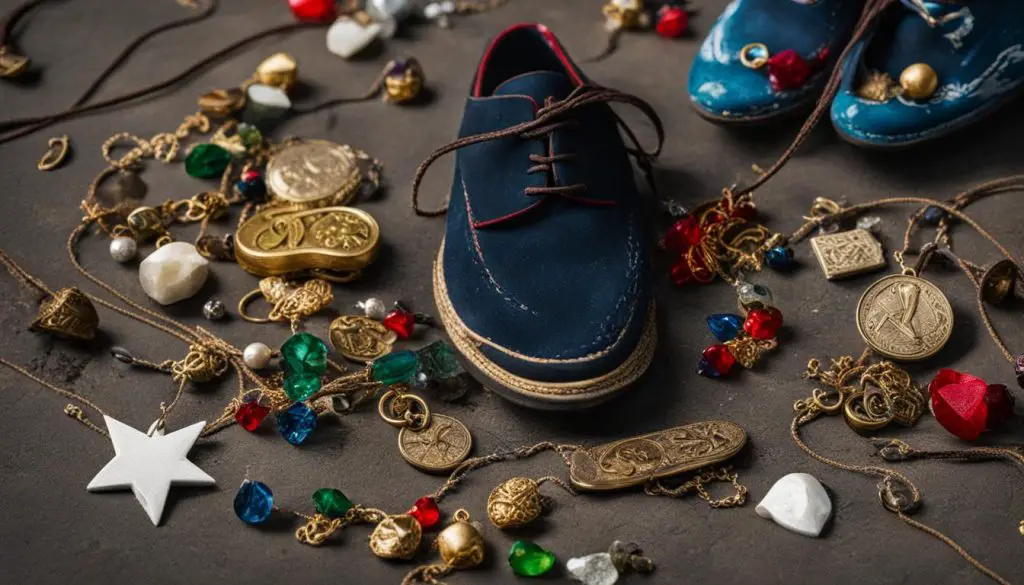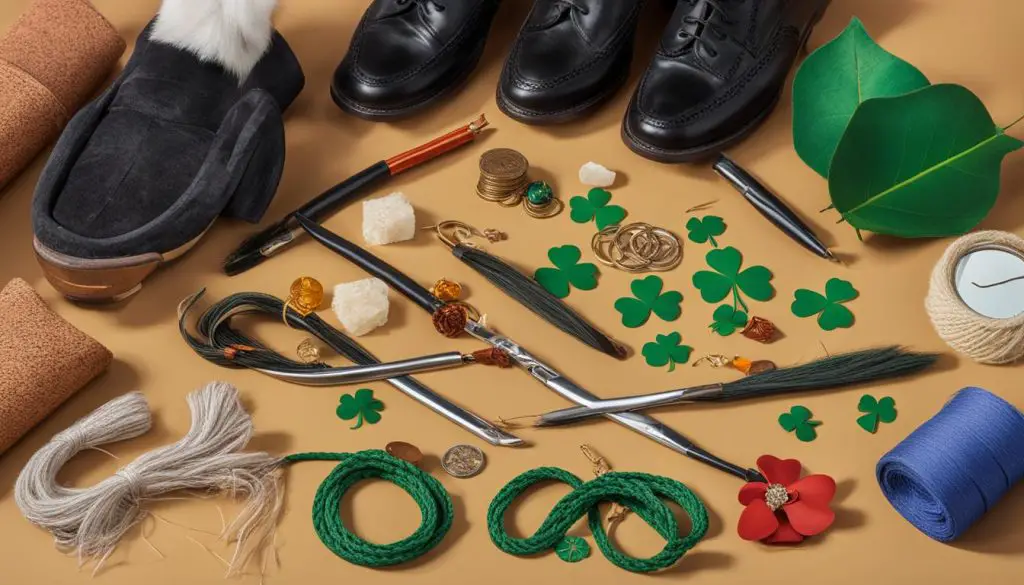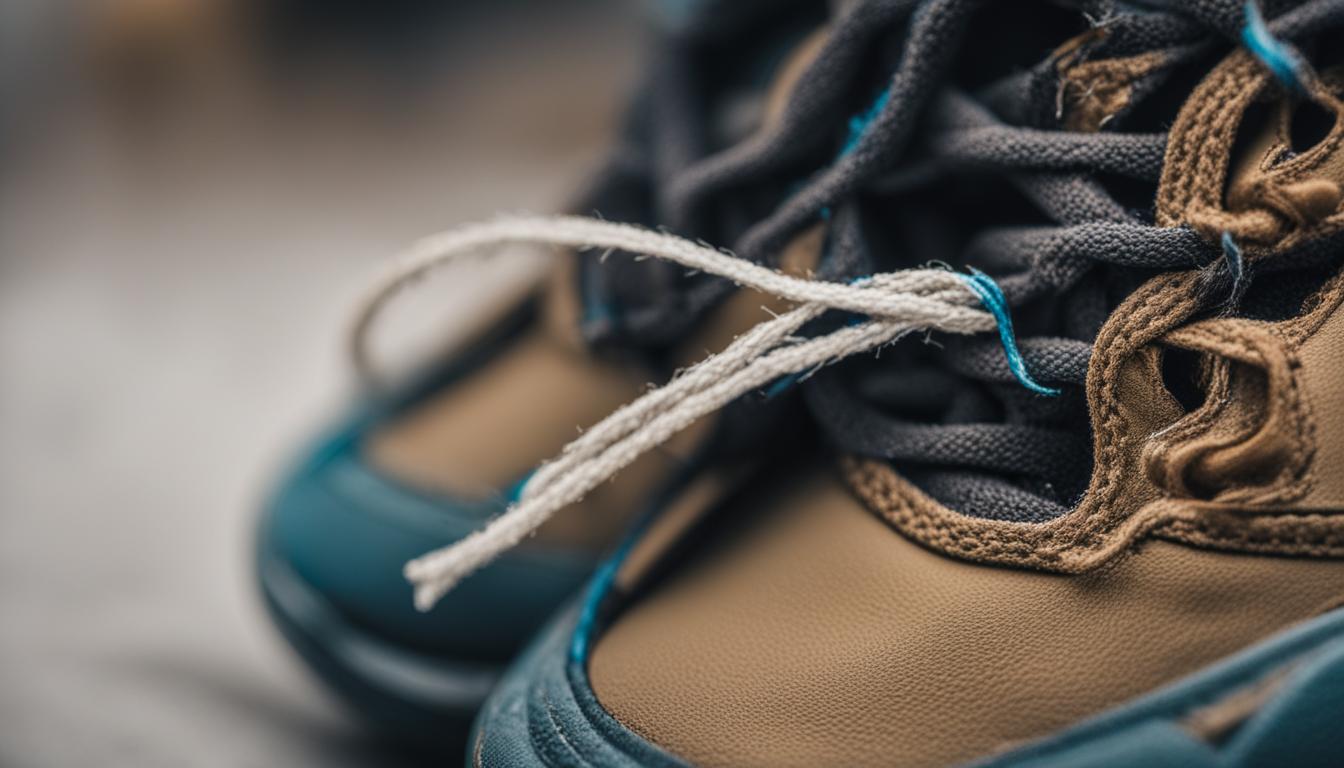Breaking a shoe lace is not just a matter of inconvenience. In fact, it is associated with a wide range of superstitions, beliefs, and cultural interpretations. Whether you see it as good luck or bad luck depends on your personal beliefs and the customs of your culture. Let’s explore the significance, symbolism, and various beliefs surrounding the breakage of a shoe lace.
Contents
- 1 Superstitions and Beliefs Surrounding Untied Shoelaces
- 2 The Historical Connection Between Shoelaces and Bad Luck
- 3 The Power of Suggestion in Superstitions
- 4 Divination through Shoelaces and Footwear
- 5 Unusual Customs and Beliefs Related to Shoelaces
- 6 Alternative Superstitions and Practices Related to Luck
- 7 Conclusion
- 8 FAQ
- 8.1 Are there superstitions surrounding breaking a shoelace?
- 8.2 What do untied shoelaces signify?
- 8.3 Is there any historical significance to the belief in shoelace breakage bringing bad luck?
- 8.4 Why do people believe in these superstitions?
- 8.5 What are some other beliefs related to shoelaces and footwear?
- 8.6 Are there any unusual customs or beliefs associated with shoelaces?
- 8.7 Are there alternative superstitions and practices related to luck?
- 9 Source Links
Key Takeaways:
- Breaking a shoe lace is believed to reveal the imbalance of love between a person’s parents.
- Untied shoelaces can be interpreted as signs of positive or negative gossip about an individual.
- Tying someone else’s laces is believed to bring good fortune.
- Historically, the perception of shoelace breakage has been associated with notions of moral decline and bad luck.
- Shoelaces and footwear have been used for divination and are considered powerful symbols in various cultures.
Superstitions and Beliefs Surrounding Untied Shoelaces
Untied shoelaces have long been associated with superstitions and beliefs. These interpretations offer insights into the significance and symbolism attached to the breakage of a shoelace.
One common belief is that untied shoelaces reveal an imbalance of love between a person’s parents. According to this superstition, if your shoelaces come undone while walking, it indicates that one parent loves you more than the other. Furthermore, the side on which the lace becomes untied carries its own meaning. If the right lace comes undone, it suggests that someone is speaking positively about you, while the left lace coming undone implies that someone is gossiping behind your back. If both laces come undone simultaneously, it is believed to bring bad luck.
“Untied shoelaces have long been associated with superstitions and beliefs.”
Tying someone else’s laces is also believed to bring good fortune. This practice signifies a transfer of luck and positive energy from one person to another.
These superstitions highlight the varied cultural interpretations of shoelace breakage and the symbolic meanings attached to such incidents. Whether you believe in these superstitions or not, they provide a glimpse into the fascinating world of beliefs and traditions surrounding untied shoelaces.
| Symbolism | Meaning |
|---|---|
| Untied lace on the right shoe | Positive remarks or praise |
| Untied lace on the left shoe | Gossip or negative comments |
| Both laces come undone | Signifies bad luck |
| Tying someone else’s laces | Brings good fortune |
The Historical Connection Between Shoelaces and Bad Luck
The association of shoelace breakage with bad luck can be traced back to historical beliefs and cultural norms. In the 17th and 18th centuries, wearing laced shoes was seen as effeminate and a moral decline. This negative perception of shoelaces may have contributed to the belief that a broken lace brings bad luck. Additionally, the belief that falling over loose laces is an omen of disaster or misfortune can be traced back to the fear of tripping, which was considered taboo. These historical connections highlight the cultural interpretations and significance attached to shoelace breakage.
Throughout history, different cultures have ascribed various meanings to the act of breaking a shoelace. In some societies, it is believed that a broken lace signifies the disruption of balance or harmony, leading to potential misfortune or negative outcomes. This cultural interpretation reflects the idea that shoelace breakage represents a disruption in one’s life, causing a shift in fortune or luck. The historical connection between shoelaces and bad luck showcases the depth of cultural beliefs and the significance attributed to everyday objects.
Furthermore, the historical association of shoelace breakage with bad luck highlights the power of symbolism in shaping superstitions. Symbols and objects have long been used to convey deeper meanings and can evoke certain emotions or beliefs. Shoelaces, as a symbol of connection and stability, have been interpreted in various ways, leading to the development of superstitions and beliefs surrounding their breakage. The historical context of these beliefs provides insights into the cultural significance of shoelace breakage and its impact on perceptions of luck and fortune.
In conclusion, the historical connection between shoelaces and bad luck sheds light on the diverse interpretations and cultural beliefs surrounding the breaking of a shoelace. From the negative perception of laced shoes in the past to the symbolic significance of shoelaces, these historical associations have shaped superstitions and cultural interpretations. Whether one believes in the superstitions or sees them as mere folklore, they provide an intriguing glimpse into the human fascination with luck, symbolism, and the unexplained.
The Power of Suggestion in Superstitions
Superstitions surrounding the breaking of a shoelace are deeply rooted in the power of suggestion. People often believe in these superstitions because they have been told that certain events or occurrences are indicative of good or bad luck. The connection between a broken shoelace and subsequent “bad luck” can be attributed to the power of suggestion and the belief that these events are related.
Superstitions are based on individual beliefs and interpretations rather than concrete evidence. The significance attached to shoelace breakage varies across cultures and can range from beliefs about love and gossip to signs of good fortune or impending bad luck.
As with many superstitions, the interpretation of shoelace breakage depends on personal beliefs and cultural influences. Some may see a broken shoelace as a sign of impending misfortune, while others may view it as a symbol of good luck or a reminder of the fascinating world of superstitions and the power of symbolism.
Divination through Shoelaces and Footwear
Shoelaces and footwear have long been associated with divination and traditional beliefs. These objects hold symbolic meaning and are believed to provide insights into an individual’s life and future. Here are some intriguing beliefs and practices related to shoelace breakage and footwear:
The Symbolism of Shoelace Breakage
In many cultures, breaking a shoelace is seen as more than just a simple mishap. It is believed to hold deeper significance and symbolism. Traditional beliefs suggest that a broken shoelace can indicate upcoming changes or challenges in one’s life. The specific lace that breaks may also convey different meanings. For example, if the left lace breaks, it is often associated with negative outcomes or bad luck, while the right lace breaking may signify positive events or good luck.
Traditional Beliefs and Interpretations
Shoelace breakage is not only seen as a symbol of luck but is also often tied to other traditional beliefs. Some cultures believe that a broken shoelace indicates the need to pause and reflect on one’s actions and decisions. It may serve as a reminder to slow down and be more mindful in daily life. Additionally, the act of tying someone else’s shoelaces is associated with bringing good fortune and prosperity to the person being helped.
Footwear as Powerful Symbols
Footwear itself is considered a powerful symbol in many cultures. Wearing shoes with holes in the soles has been believed to indicate future wealth and abundance. The position of shoes on the feet has also been associated with revealing a person’s character traits. For example, wearing shoes on different sides of the foot was thought to reflect an individual’s unique personality or behavior. These traditional beliefs underline the importance of footwear as objects of divination and interpretation.
As shoelaces and footwear continue to hold symbolic meaning in various cultures, the traditions surrounding them provide a fascinating glimpse into the human fascination with superstition and belief. Whether it is unraveling meanings through broken shoelaces or interpreting character traits based on footwear placement, these practices highlight the rich tapestry of cultural interpretations and beliefs associated with these everyday objects.
Unusual Customs and Beliefs Related to Shoelaces
Shoelace breakage is not only associated with traditional beliefs and superstitions but also with some unusual customs. In ancient times, it was believed that placing a piece of lint cotton sheet from one’s bed in a shoe could prevent infidelity. This peculiar belief highlights the intricate connections between shoelace breakage and cultural interpretations.
“Walking with one shoe on and the other foot bare is considered a sign of bad luck for the entire year,” says cultural anthropologist Dr. Emily Grant. “This belief is rooted in the idea that asymmetry disrupts balance and harmony, inviting misfortune.”
Furthermore, certain sightings related to shoelaces are seen as omens. For instance, if a beetle crawls out of a shoe, it is considered a troubling sign that foretells potential difficulties or challenges. Conversely, finding a shoe lying flat on the floor is believed to bring good luck. These unconventional beliefs add to the rich tapestry of interpretations surrounding shoelace breakage.
Unusual Customs and Beliefs Related to Shoelaces:
- Placing lint cotton sheet from one’s bed in a shoe to prevent infidelity
- Walking with one shoe on and the other foot bare believed to bring bad luck
- Beetle crawling out of a shoe seen as a troubling omen
- Shoe lying flat on the floor believed to bring good luck
These customs and beliefs demonstrate the fascinating and diverse interpretations people have attached to shoelace breakage throughout history. They shed light on the intricate relationship between cultural practices and symbolic meanings.

| Custom/Belief | Meaning |
|---|---|
| Placing lint cotton sheet in a shoe | Believed to prevent infidelity |
| Walking with one shoe on and the other foot bare | Considered a sign of bad luck for the entire year |
| Beetle crawling out of a shoe | Seen as a troubling omen |
| Shoe lying flat on the floor | Believed to bring good luck |
Alternative Superstitions and Practices Related to Luck
Breaking a shoelace is not the only superstition related to luck. Throughout different cultures, there are numerous beliefs and practices that associate certain actions or occurrences with good or bad fortune. Here are some alternative superstitions and customs you may find intriguing:
Squeaking Shoes in the Workplace
While some may consider a squeaking shoe an annoyance, in certain cultures, it is believed to bring good luck when entering the workplace. The squeaking sound is thought to ward off any negative energy or obstacles, ensuring a smooth and successful day ahead. Conversely, silent shoes are seen as a bad omen, potentially signaling a lack of productivity or unfortunate events.
Left Foot First for Good Fortune
In many cultures, the act of starting a journey or entering a new place with the left foot is associated with good luck. It is believed to bring positive energy, blessings, and favorable outcomes. On the other hand, beginning with the right foot may be seen as bringing bad luck or hindrances along the way. This custom showcases the cultural interpretations and significance placed on even the simplest of actions.
Spitting for Luck
Spitting in the hands or on socks may seem peculiar, but in some traditions, it is considered a way to ward off bad luck or attract good fortune. The act of spitting is believed to dispel any negative energy or protect against evil spirits. It is seen as a symbolic gesture, demonstrating a person’s desire for positive outcomes and blessings.
These alternative beliefs and practices further emphasize the diverse interpretations and customs related to superstitions. While breaking a shoelace may have its own significance, there are countless other ways in which people seek to attract luck and avoid misfortune in their lives.

Conclusion
The beliefs and superstitions surrounding the breaking of a shoelace are truly fascinating. Whether it is considered good luck or bad luck depends on personal beliefs and cultural influences.
Some interpret a broken shoelace as a sign of bad luck, while others view it as a symbol of good fortune. The position of the untied lace, whether on the right or left shoe, may also hold specific meanings. These superstitions highlight the rich cultural traditions and interpretations that have been shaped over time.
Ultimately, breaking a shoelace serves as a reminder of the captivating world of superstitions and the power of symbolism. It is intriguing to explore how different cultures perceive and interpret this event. So the next time you experience a broken shoelace, consider the superstitions and beliefs that surround it – and decide for yourself whether it is good luck or bad luck!
FAQ
Are there superstitions surrounding breaking a shoelace?
Yes, there are various superstitions and beliefs associated with breaking a shoelace.
What do untied shoelaces signify?
Untied shoelaces can represent different things depending on which lace comes undone, such as imbalance of love between parents or someone speaking positively or gossiping about you.
Is there any historical significance to the belief in shoelace breakage bringing bad luck?
Yes, the negative perception of shoelaces in the past and the fear of tripping contributed to the belief in shoelace breakage bringing bad luck.
Why do people believe in these superstitions?
Superstitions often rely on the power of suggestion and personal beliefs, rather than concrete evidence.
Some beliefs include divination through footwear, such as wearing shoes with holes indicating wealth, and unconventional customs like placing lint in shoes to prevent infidelity.
Are there any unusual customs or beliefs associated with shoelaces?
Yes, there are beliefs such as walking with one shoe on and the other foot bare being seen as bad luck for the entire year.
Yes, there are beliefs like entering the workplace with a squeaking shoe bringing good luck, and specific foot placement or spitting rituals for attracting or warding off luck.





